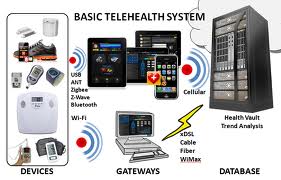
Summary: As a result of the ACA and the increase in patients while the physician shortage is magnified, efforts are under way to address the lopsidedness of supply and demand. One of those efforts is telemedicine.

Summary: As a result of the ACA and the increase in patients while the physician shortage is magnified, efforts are under way to address the lopsidedness of supply and demand. One of those efforts is telemedicine.
The History of Telemedicine
The influx in individuals who are recently eligible for insurance coverage has added fuel to the fire in terms of the number of physicians who can provide care. Telemedicine is expanding in popularity and use as a means to address this issue, while also reducing healthcare costs and increasing both accessibility and affordability. Telemedicine gained exposure initially by being implemented in rural areas, in which access to in particular specialists was extremely sparse. Today the boundaries of telemedicine are almost limitless, extending to physicians actually performing surgeries using remote robotic technology.
Telemedicine Basics
Telemedicine is a means in which a physician and a patient can interact generally through methods of web conferencing, which may include Facetime and Skype as well as other means. A recent survey from the UK’s Department of Health outlines telemedicine can bring about 15% reduction in emergency room visits, 14% reduction in elective admissions, and 14% reductions in bed days.
Barriers to Telemedicine
While telemedicine unquestionably has tremendous benefits or potential benefits, there are a few roadblocks.
- Reimbursement – CMS has been struggling to determine how proper reimbursement should be applied for telemedicine. Traditional reimbursement was based upon a face-to-face visit. In an effort to mitigate this issue, CMS created 2 new CPT codes, (99495 and 99496) specific to telemedicine, and effective as of January 1, 2014. Both codes reimburse for communication through direct contact, telephone, and electronic within 2 days of discharge. 99495 applies to moderate complexity during the service and is within 14 days of discharge. 99496 applies to high complexity during the service and is within 7 days of discharge.
- Licensure – Licensure has become a barrier as well. While providing care is done through virtual means, a physician cannot provide telemedicine services in a state in which he/she doesn’t hold a license. Licensure has traditionally been issued on a per state basis. This is not to say that a physician can’t be licensed in more than one state, but that individual application has to be made for each state. Each state has traditionally had at least subtle differences in their application process and requirements. Recently, bills have been proposed to move physician licensure to the federal level, enabling those who are approved, to practice medicine in any state. It remains to be seen as to whether or not this legislation will pass. Current licensure application ranges from $150 to $1290 per application, depending upon the particular state.
- Other Considerations – A few of other barriers to telemedicine include the type of consent and other forms required from a patient perspective, the type of services a physician may perform and be reimbursed, and the ability to prescribe medications.
Telemedicine is certainly on the rise. The potential benefits and uses are almost limitless. Of course with almost anything, there are barriers to overcome. CMS, other agencies, and branches of legislation are working diligently to ensure the success of telemedicine. It will be an interesting facet to follow over the next couple of years.
What has been your experience, successes, challenges you and your organization have encountered? We would love to hear your thoughts and/or any best practices you may have established.